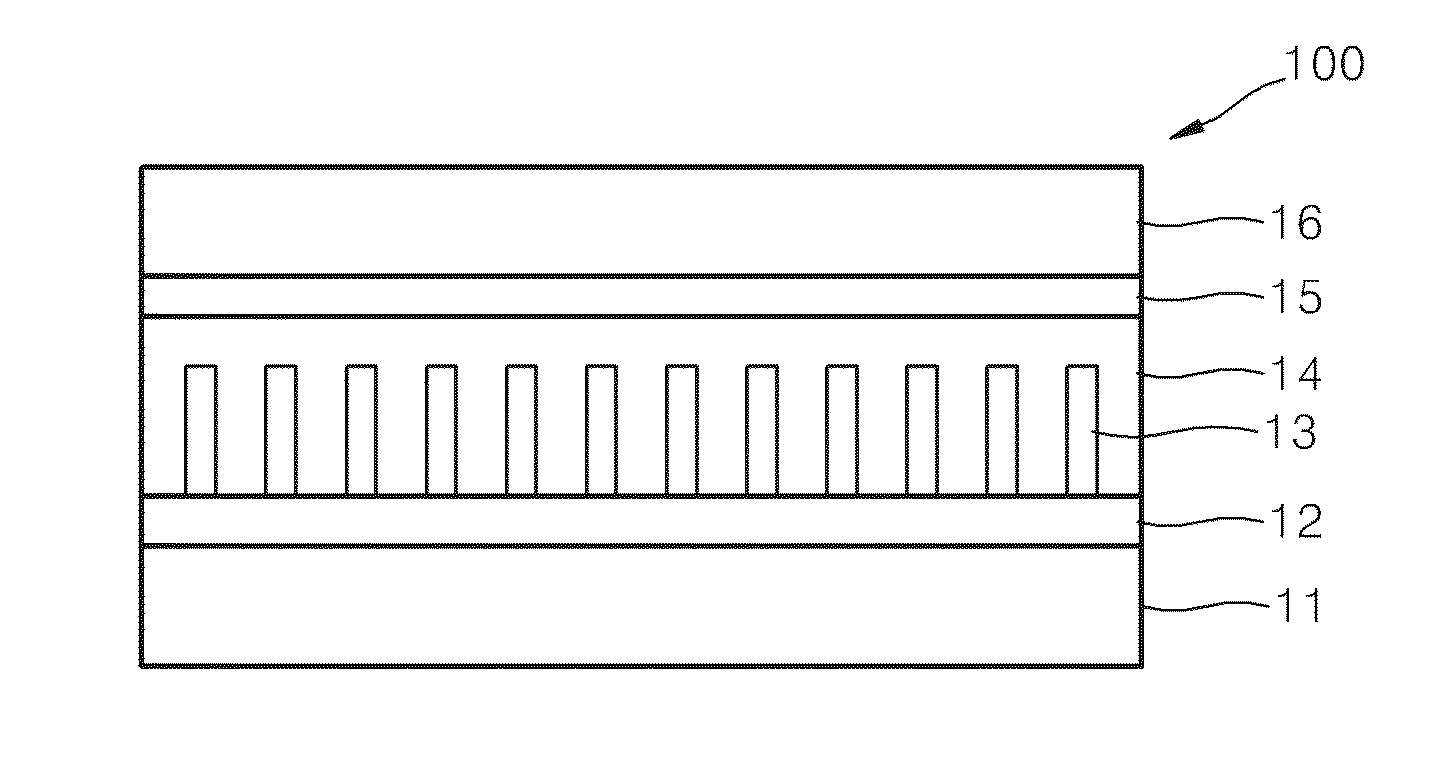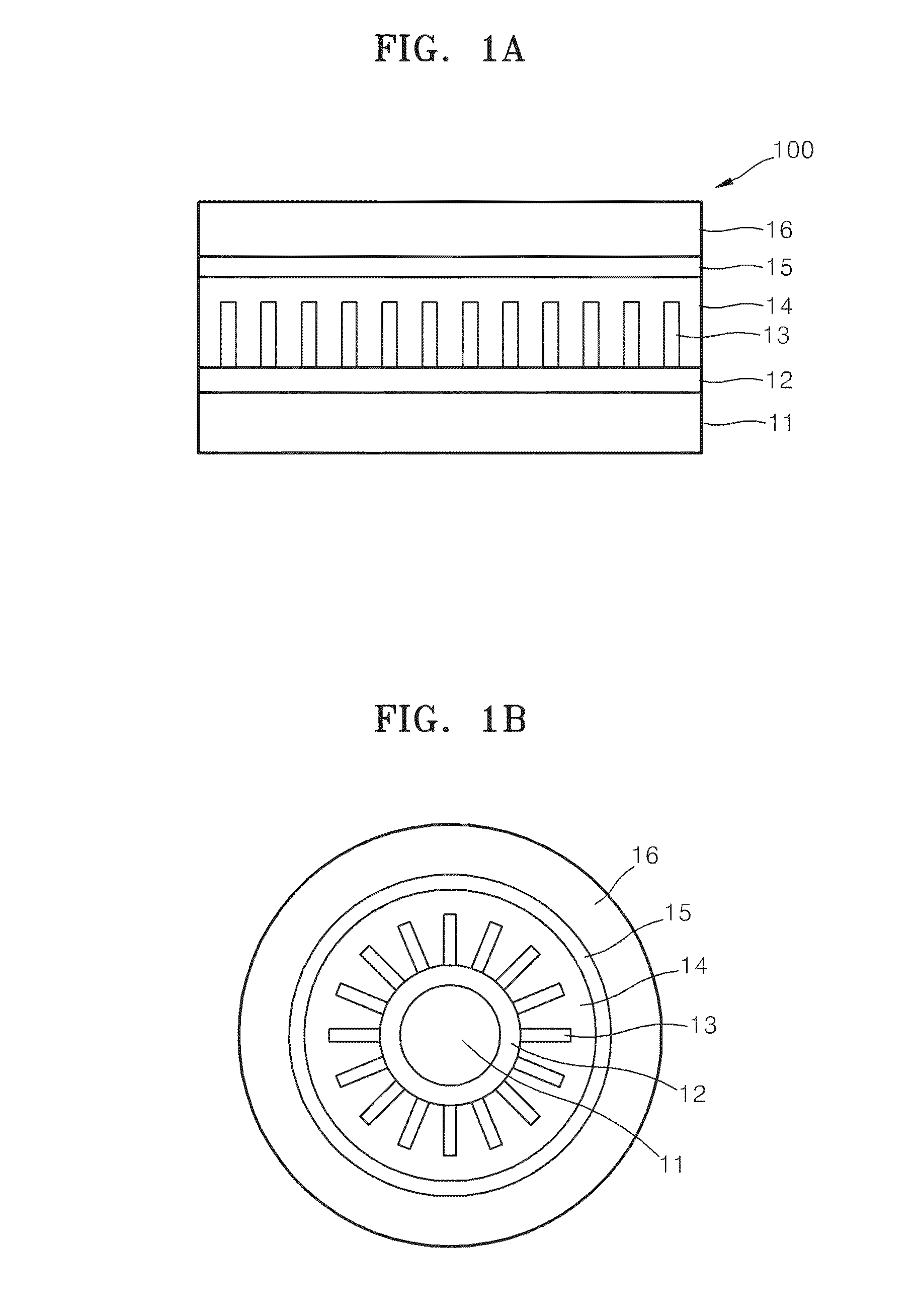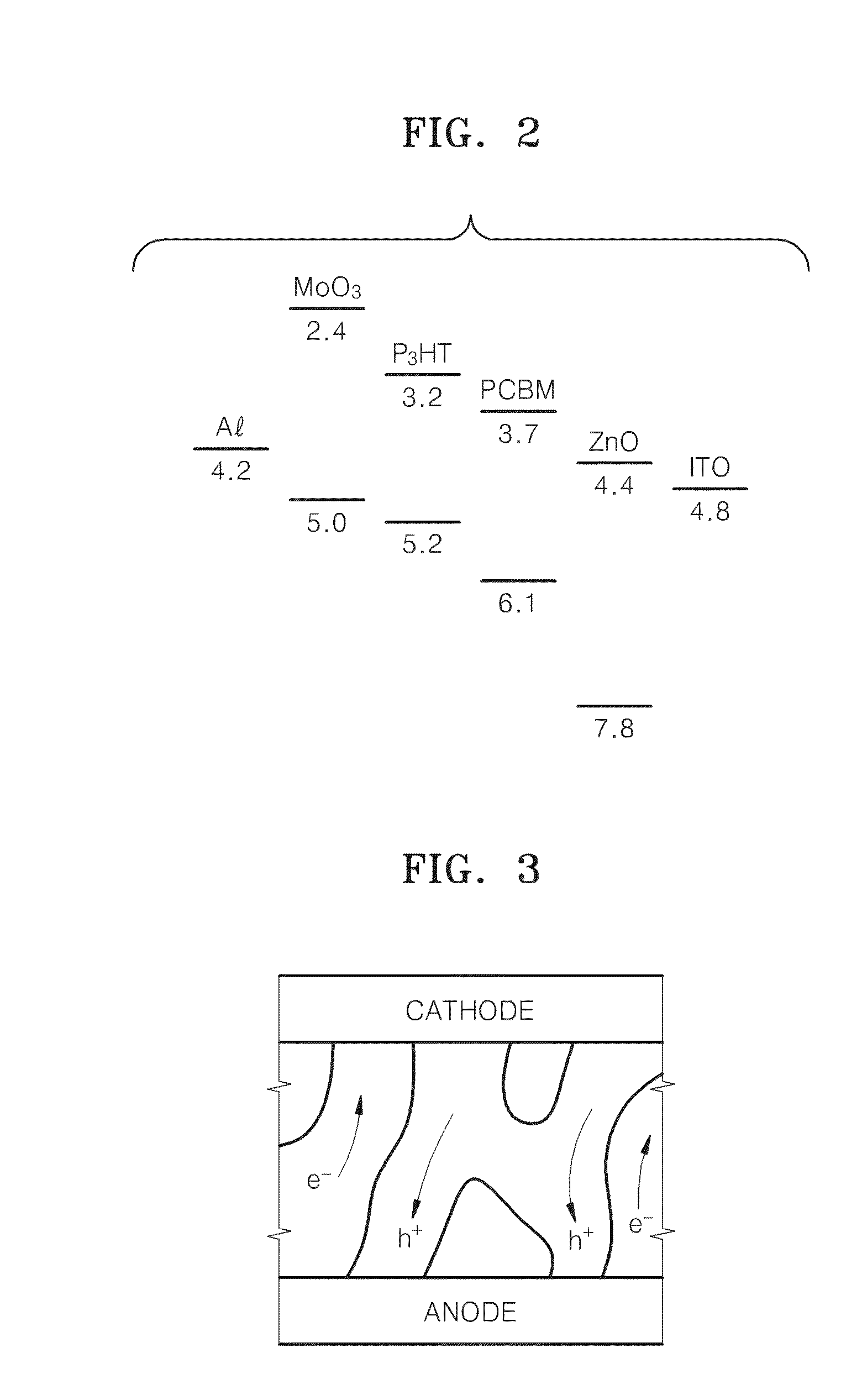Inverted organic solar cell and method of manufacturing the same
a solar cell and organic technology, applied in the field of organic solar cell inverted, can solve problems such as deterioration of organic solar cell performance, and achieve the effect of high efficiency and flexibility
- Summary
- Abstract
- Description
- Claims
- Application Information
AI Technical Summary
Benefits of technology
Problems solved by technology
Method used
Image
Examples
example 1
[0071]An organic chemical that existed on the surface of a glass fiber substrate was removed by having the glass fiber substrate, which was about 30 mm in diameter and 50 mm long, go through piranha cleaning with a mixed solution of sulfuric acid and hydrogen peroxide at a 3:1 volume ratio for 10 minutes at 80° C.
[0072]By using the CVD technique, ITO was deposited 150 nm thick on a half side of the glass fiber substrate. The ITO deposited on the glass fiber substrate was cleansed with acetone, was subjected to ultrasonication in isopropyl alcohol, was cleansed with DI water, and then was dried in a vacuum oven for 30 minutes at 100° C.
[0073]A 10 nm thick ZnO seed layer was deposited on the ITO coated film via the ALD process. Next, ZnO nanorods were grown from the ZnO seed layer via a hydrothermal growth process using 0.025 M zinc nitrate dehydrate and 0.025 M hexamethylenetetramine. The ZnO nanorods were grown from the ITO surface in a radial manner, forming unevenness. The grown Z...
example 2
[0076]The organic solar cell was manufactured via the same process as Example 1, except that the P3HT:PCBM coated layer went through thermal annealing at 120° C. instead of 90° C.
example 3
[0077]The organic solar cell was manufactured via the same process as Example 1, except that the P3HT:PCBM coated layer went through thermal annealing at 150° C. instead of 90° C.
PUM
 Login to View More
Login to View More Abstract
Description
Claims
Application Information
 Login to View More
Login to View More - R&D
- Intellectual Property
- Life Sciences
- Materials
- Tech Scout
- Unparalleled Data Quality
- Higher Quality Content
- 60% Fewer Hallucinations
Browse by: Latest US Patents, China's latest patents, Technical Efficacy Thesaurus, Application Domain, Technology Topic, Popular Technical Reports.
© 2025 PatSnap. All rights reserved.Legal|Privacy policy|Modern Slavery Act Transparency Statement|Sitemap|About US| Contact US: help@patsnap.com



